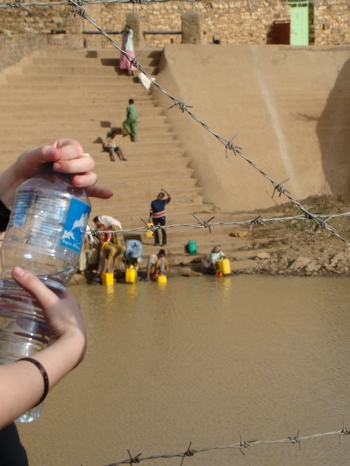
Sanitation
last authored:
last reviewed:
Around the world, almost 1.7 million deaths per year are attributable to unsafe water, sanitation and hygeine (ref). Due to decades of work, it is clear that the best programs combine education with water quality and sanitation.

Queen of Sheba's Pool, Ethiopia taken by Pal Randhawa
Health Risks of Poor Sanitation
The biggest reason for good hygeine is diarrheal diseases. However, water-borne viruses can also lead to respiratory illnesses.
Good hygeine reduces rates of antibiotic prescribing and thereby antibiotic resistance.
Trachoma is the world's leading cause of blindness and can be prevented by face washing.
Hygeine is an important step in preventing spread of new dieases such as SARS or bird flu.
Many people of the world are at increased risk of infection, including the newborn, the elderly, or people with immunosupression.
Feces is a major source of infectious agents. Feces may be spread by fluids, fingers, flies, and fields/floors.
Home Hygiene
Hygiene is more than handwashing. It also includes safe waste disposal, household water treatment and storage, food, personal, and general hygiene, care of domestic animals and pets, and control of insects.
Latrines
Open defecation is not acceptable
Fixed place defecation is critical. this can be simple pit, to improved pit, to pour flush.
Hygiene Promotion
The family is central in promoting hygiene. Integrated efforts across government, organizations, and health workers are needed.
Capacity must also be built at a local level. Community-led total sanitation (CLTS) can be incredibly important.
Resources and References
International Scientific Forum on Home Hygiene (IFH)
Water Supply and Sanitation Collaboration Council
http://www.sanplat.com/
